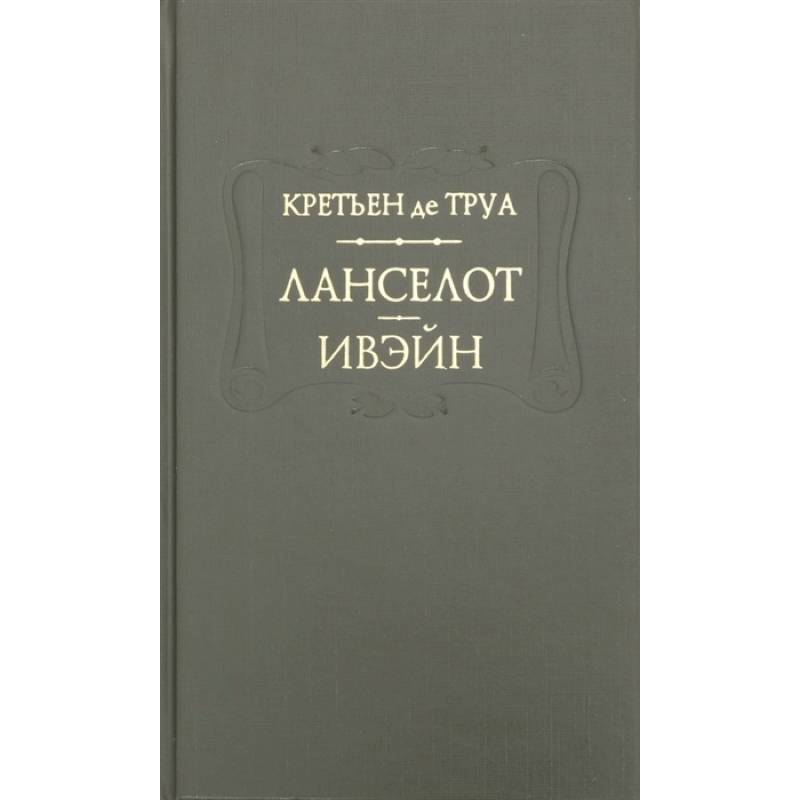Lancelot. Yvain
Please sign in so that we can notify you about a reply
The name Chrétien de Troyes is now known, perhaps, to everyone who is at least somewhat familiar with medieval literature. With the activities of this Champagne troubadour, the court composer of Marie of France, the very concept of 'Middle Ages' is firmly associated, and without his works about King Arthur and the brotherhood of the Knights of the Round Table, about the fair-haired Isolde and the brave Tristan, about the deceived King Mark and the desired and unattainable Grail, all subsequent European literature would have been impossible.
The knightly novels of Chrétien de Troyes spawned a rich tradition, numerous adaptations, and imitations. Their influence permeates all subsequent courtly literature of France, echoes in the poem 'Sir Gawain and the Green Knight' and is even felt in 'The Death of Arthur' by Thomas Malory, and their creator, the trouvère Chrétien de Troyes, a singer of adultery and courtly love, is rightfully considered not only the creator of the canon of the knightly novel but also the founder of the European novel as a whole.
The works of Chrétien are multi-layered texts, in which the lyrical and the epic, the adventurous and the spiritual, the world of Occitan France and the fairy-tale utopia of Arthur's kingdom, which arose in time immemorial, are whimsically combined. Arthur rules only where true chivalry exists. Firmly tied to Celtic mythology, we are introduced to a phantasmagorical world parallel to the real one, in which the figure of the knight combines the traits of a Breton brave warrior, a Celtic god of light, and a Christian holy ascetic, and in the image of his beloved - the traits of a European lady of the 12th century and a Celtic enchantress-fairy, the guardian of the magical spring.
In 1980, two novels by Chrétien - 'Cligès' and 'Erec and Enide' were published in the 'Literary Monuments' series. This edition is a kind of second volume of Chrétien, which includes two other of his novels (out of the three remaining), 'Lancelot' and 'Yvain', fully translated by V.B. Mikushevich, one of the major domestic translators. Previously, 'Yvain' had already been published in his translation - in 1974, in the 'Library of World Literature', and only part of this novel was translated. This time, the translation of 'Yvain' is essentially done anew.
The accompanying articles by N.M. Dolgorukova and V.B. Mikushevich, firmly linking the work of Chrétien de Troyes not only with the literary tradition, the work of Vase and Marie of France, but also with a whole layer of spiritual culture, starting from Albigensian and Manichaean teachings and ending with the 'gay science' of troubadours, celebrated by Friedrich Nietzsche, will arouse considerable interest.
To grasp the texts of Chrétien, to immerse oneself in his era, to be imbued with its atmosphere will be helped by detailed and extensive comments, as well as rare color illustrations.
Recommended for a wide range of readers.
Author:
Author:Crétien de Troyes
Cover:
Cover:hardcover
Category:
- Category:History & Geography
- Category:Fiction
Publication language:
Publication Language:Russian
Paper:
Paper:offset
Dimensions:
Dimensions:17x11.3x2 cm
Age restrictions:
Age restrictions:12+
Product type:
Product type:silver embossing
ISBN:
ISBN:978-5-94451-057-0
No reviews found
